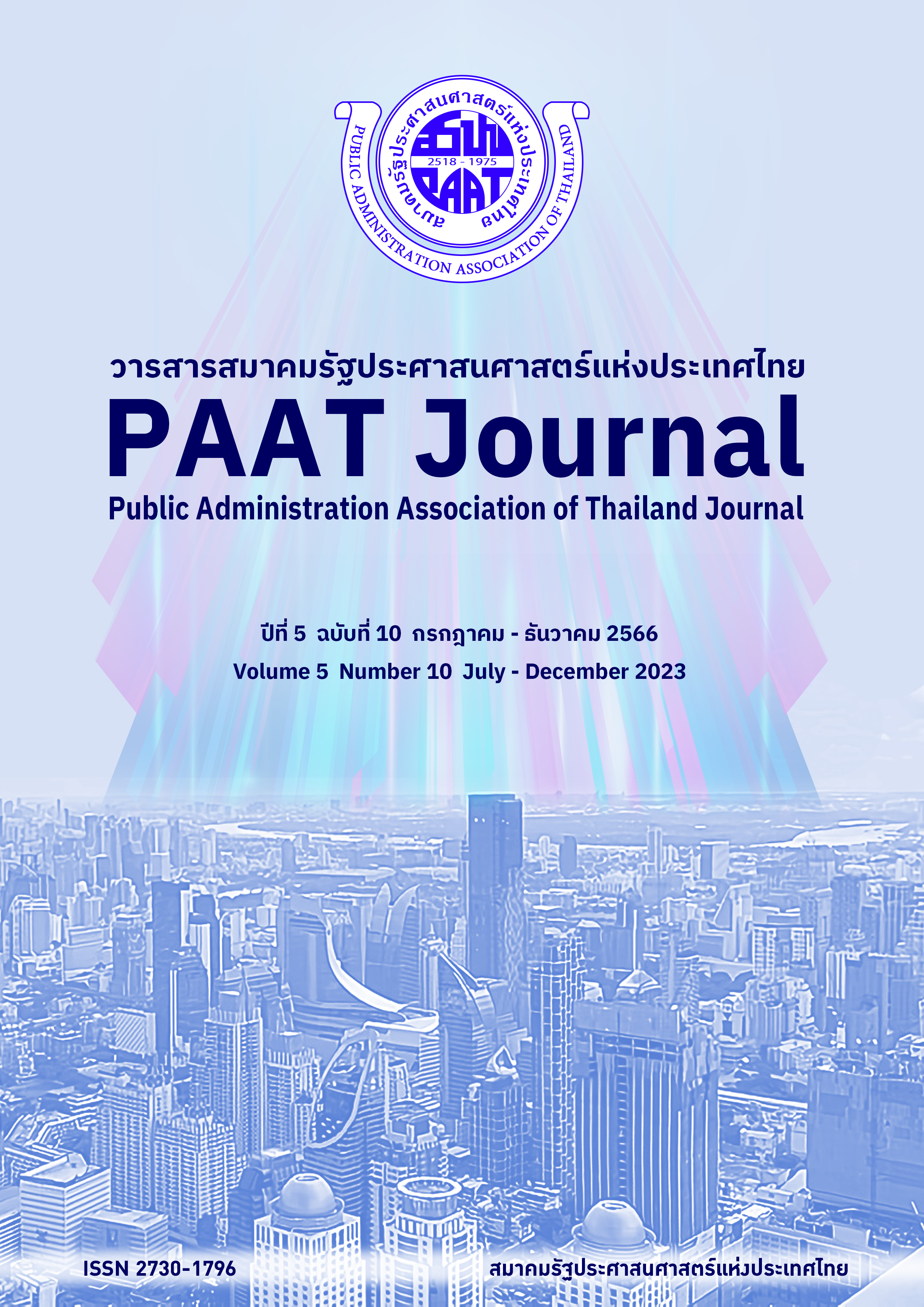The Role of Local Government in Thailand in Environmental Management for Climate Change Adaptation
Keywords:
Climate Change, Climate Change Adaptation, Climate Change Mitigation, Greenhouse Gas, Greenhouse EffectAbstract
This research aims to investigate the roles, responsibilities, and capacities of local government concerning environmental management, particularly in relation to addressing climate change conditions. Employing a mixed method research approach, this research studies the related documents and surveys of 2,149 local government organizations across the country through a structured questionnaire that addressed the local governments' environmental management practices and three dimensions: adaptation, mitigation, and capacity-building, all of which are linked to climate change conditions. The study discovers that environmental management isn't a primary focus for most organizations, with smaller bodies showing more commitment to environmental spending. Waste management emerges as the top priority, driven by community concerns.
Regarding adaptation, there's decent awareness of climate change issues among local governments, with 38.43% engaging in adaptation activities, primarily policy-driven measures and aiding vulnerable groups. Insufficient green spaces cover less than 20% of the country, indicating a need for more environmentally friendly areas. Concerning greenhouse gas mitigation, local governments undertake activities, scoring an average of 36.82%. Key actions focus on waste management and building controls, yet nearly half the surveyed area lacks adequate waste management. In terms of capacity building, about 60.66% lack activities related to data, research, and technology for climate change adaptation. The majority of local government support the concept of decentralizing power to handle emergencies independently (70.40%), increasing budgets for water source development (63.70%), and seeking central authority support for sustainable green city initiatives (55.80%).
This study highlights the varied environmental management landscape within Thai local governments, emphasizing the need for enhanced focus, resource allocation, and collaborative efforts to combat climate change effectively.
References
Bervia, Mark. (2009). Key Concepts in Governance. SAGE Publications.
Climate Center. (2022). Greenhouse effect. http://climate.tmd.go.th/content/article/10
Department of Environmental Quality Promotion. (2023). Policies and plans at the international and national levels related to urban management supervision and promotion. Urban environmental management. Environmental sustainability assessment guide for local government organizations. Department of Environmental Quality Promotion.
Department of Environmental Quality Promotion. (2023). Origins and importance of environmentally sustainable city assessment. Guide to sustainable environmental assessment for local administrative organizations. Department of Environmental Quality Promotion.
Hambleton, Robin Savitch, Hank V. and Stewart, Murray. (2002). Globalism and Local Democracy. In Hambleton, Robin Savitch, Hank V. and Stewart, Murray (Ed.), Globalism and Local Democracy: Challenge and Change in Europe and North America (pp. 1-19). Hampshire: Palgrave, p. 12.
Jarusombat, S. (2021). Potential of Local Government Organizations in Environmental Management. Journal of the King Prajadhipok's Institute, 9(1), 5-35.
Levin, K., Boehm, S., & Carter, R. (2022). 6 Big Findings from the IPCC 2022 Report on Climate Impacts, Adaptation and Vulnerability. https://www.wri.org/insights/ipcc-report-2022-climate-impacts-adaptation-vulnerability.
Lienard, C. (2022). COP27 in Egypt. https://www.bic-rhr.com/sites/default/files/inline-files/BIC%20Special%20Publication%2C%20COP27%20-%20Clementine%20Lienard-1.pdf.
National Development Research Institute. (2006). Assessment of social risk and vulnerability: Measuring poverty and social vulnerability into practical guidelines in Thailand. https://tdri.or.th/wpcontent/uploads/2012/12/h103.pdf
Office of Natural Resources and Environmental Policy and Planning. (2018). Introduction, Definitions, and Principles for Preparing Plans to Adapt to Change. Ministry of Natural Resources and Environment.
Office of Natural Resources and Environmental Policy and Planning. (2021). Environmental Protected Areas. https://www.onep.go.th/
Royal Thai Government Gazette, Vol. 116, Pt. 114. Decentralization Plan and Procedures for Local Government Organizations, (Special Issue), 11st November B.E. 2542 (A.D.1999), pp.53-55
Royal Thai Government Gazette, Vol. 139, Special Section 253. Solid Waste Management, (No. 2), 11st October B.E. 2565 (A.D.2022), pp.5-6
Thai Environment Institute. (2005). Environmental Governance Indicators of public participation 2005. Thai Environment Institute.
Turner, Mark. (1999). Central-Local Relations: Themes and Issues. In Turner, mark (Ed.), Central-local relations in Asia-Pacific: Convergence or divergence? (pp. 1-18). Hampshire: Palgrave, p. 4.
Downloads
Published
How to Cite
Issue
Section
License
Copyright (c) 2023 PAAT Journal

This work is licensed under a Creative Commons Attribution-NonCommercial-NoDerivatives 4.0 International License.


